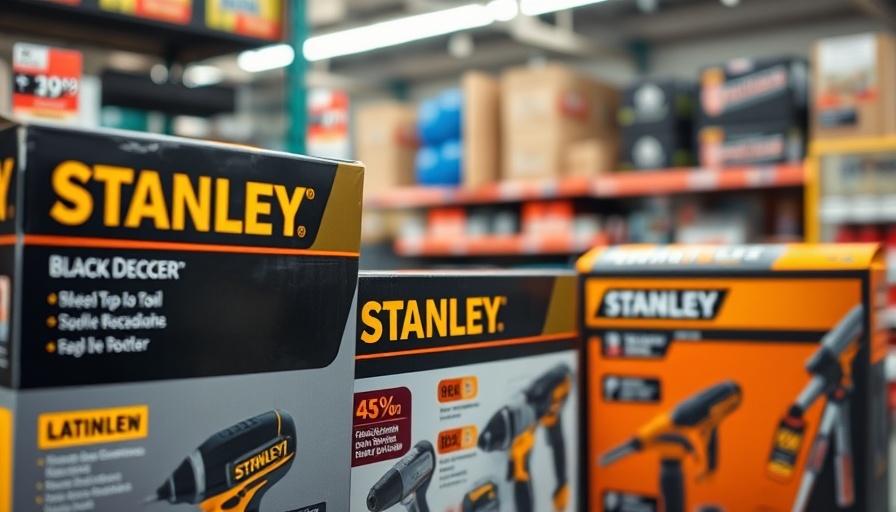
Understanding the Price Increases in Construction Tools
In an increasingly uncertain economic landscape, Stanley Black & Decker, a leader in the tools manufacturing industry, has made the strategic decision to raise prices significantly to combat the impacts of tariffs. As shared in their recent earnings call, the price hike for their tools line—including popular brands like DeWalt and Craftsman—will touch U.S. retailers with a high single-digit increase observed starting this April. This decision aligns with a broader strategy to cushion the blow from a predicted 75 cent-per-share reduction in earnings primarily due to tariff-related costs.
Supply Chain Adjustments for Future Compliance
The company's Chief Operating Officer, Christopher Nelson, has emphasized a dual approach: not only are they adjusting prices, but they are also taking substantial steps in optimizing their supply chain. By aiming to enhance compliance with the U.S.-Mexico-Canada Agreement (USMCA), Stanley Black & Decker is risk-proofing their business model against future tariff impacts. This could potentially reinforce their competitive standing and align them more closely with North American manufacturing standards, spurring long-term growth in an ever-evolving market.
Financial Performance Amidst Economic Turbulence
The company reported a revenue of $3.7 billion for Q1 2025—a 3% decline from last year. Despite this drop, net earnings surged to $90.4 million, a nearly fourfold increase year-over-year, highlighting a marked improvement in operational efficiency. This juxtaposition showcases how strategic pricing and supply chain maneuvers can yield strong returns even in challenging times. For executives considering investments, these fluctuations in pricing and earnings are critical indicators of market sentiment and operational resilience.
Industry Conversation on Tariffs
Stanley Black & Decker's leadership actively participates in dialogues regarding tariffs with the U.S. administration. This proactive stance is essential not just for compliance, but for advocating policies that could benefit not only their business but the larger manufacturing community in North America. The implications of these discussions extend to various stakeholders, including business owners, property developers, and facility managers who rely on stable costs for their project budgets.
Aligning with Community and Social Responsibility
With the raised prices, cost-conscious businesses and conscientious consumers may feel the financial strain. As property developers and socially responsible enterprises consider their purchasing decisions, understanding the reasons behind the price increases becomes crucial. Pricing adjustments, while impactful, serve as a reminder that investments in quality, compliance, and sustainability are often accompanied by increased operational costs. A focus on supporting local supply chains can enhance product quality and service reliability, acting as a community bridge that facilitates a more robust economy.
In conclusion, the strategic price increases by Stanley Black & Decker reflect a delicate balancing act between maintaining market equitability and adhering to regulatory frameworks. For executives navigating these turbulent waters, understanding the broader economic implications of price hikes will be paramount in making informed decisions that align operational strategies with market realities. As the construction industry continues to evolve, those who adapt proactively by implementing similar strategies may find themselves better positioned for success.
 Add Row
Add Row  Add
Add 




 Add Row
Add Row  Add
Add 

Write A Comment